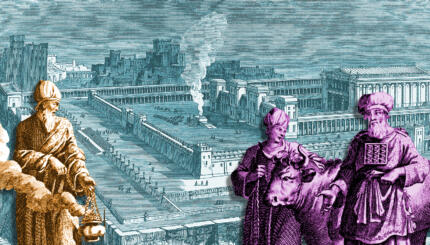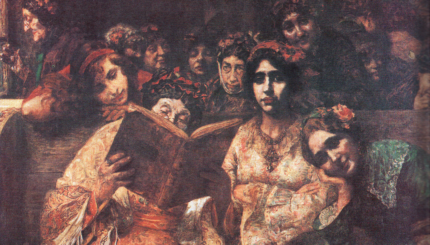In addition to the traditions described below, there is a custom of sitting on the floor or low benches during evening and morning services on Tisha B’Av, as an additional sign of mourning.
The synagogue services on Tisha B’av are most unusual. The room where the evening service is held often has its lights dimmed, and candles are lit. The prayers are spoken rather than chanted with melody. The reading of the Book of Lamentations is chanted using special musical notations that create a tone of weeping and mourning. Knowledgeable congregants often take turns reading different sections of the book. During the service there may be a discussion related to the themes of tragedy and destruction, often led by the rabbi.
The morning service the next day is also unique. The tallit (prayer shawl) and tefillin (phylacteries) are not worn, as a sign of mourning. Special prayers of mourning, called kinot, are read during this service. There is a reading from the (Deuteronomy 4:25-40) whose theme is the punishment of Israel for its sins, and opportunity and hope for redemption.


Help us keep Jewish knowledge accessible to millions of people around the world.
Your donation to My Jewish Learning fuels endless journeys of Jewish discovery. With your help, My Jewish Learning can continue to provide nonstop opportunities for learning, connection and growth.
In the haftarah [reading from the Prophets] of the morning (which is chanted in the same mournful melody as Eicha), Jeremiah speaks of the despair of the Israelites, describing Jerusalem as a total wasteland.
During the afternoon Mincha service, the mood of Tisha B’av becomes more hopeful. Tallit and are worn at this service. Both the Torah reading and the haftarah reading of this service are the same as on all other public fasts, describing the Thirteen Attributes of God and the promise of salvation. Special prayers of comfort (Nachemta) are also a feature of this service.
The evening service marks the official end of the fast of Tisha B’av.
Reprinted from Sacred Celebrations: A Jewish Holiday Handbook with permission from Ktav Publishing House, Inc.



